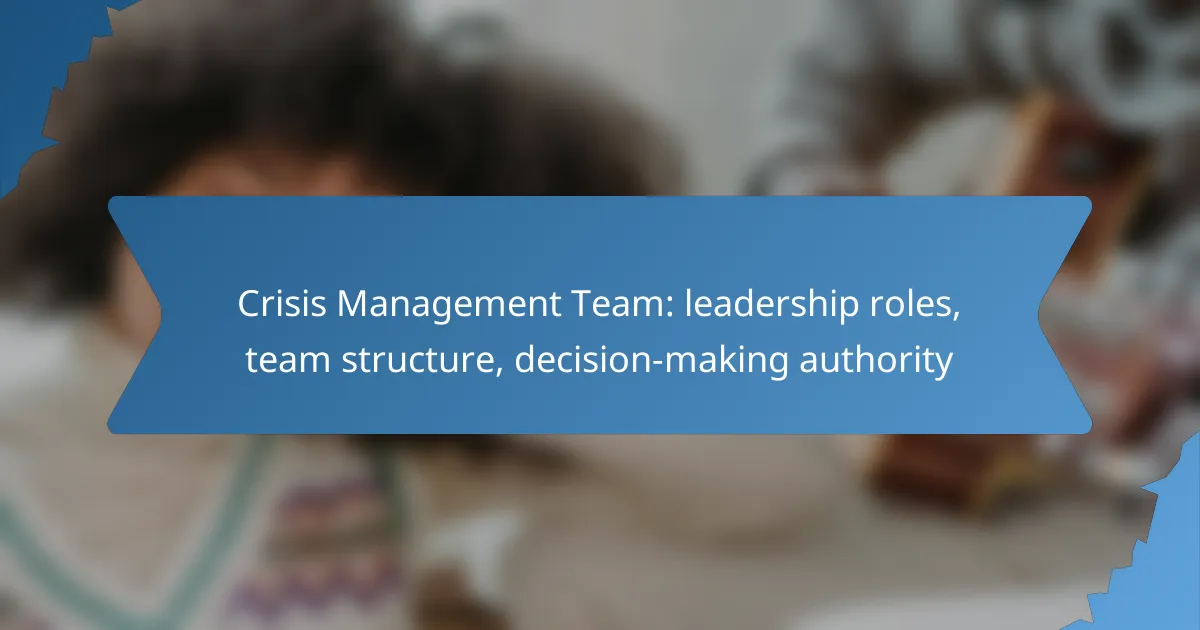In crisis management, establishing a well-structured team with defined leadership roles is vital for effective response and recovery. Each member’s responsibilities contribute to the team’s overall success, ensuring that actions are coordinated and efficient. Additionally, clear decision-making authority is essential to minimize confusion and facilitate swift action during emergencies.
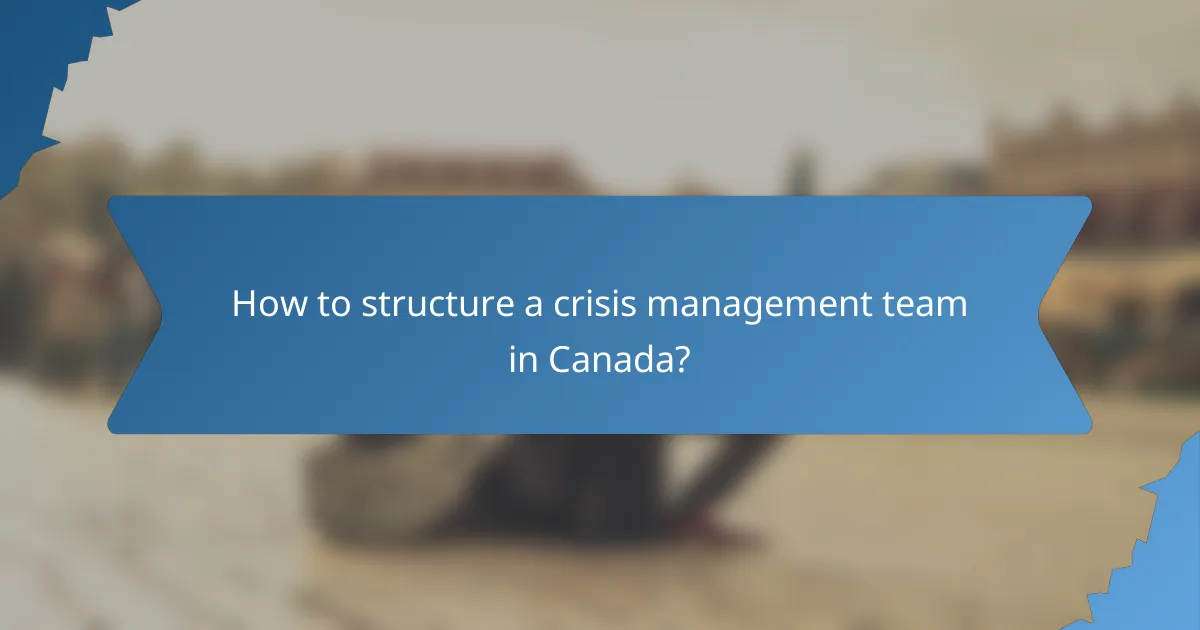
How to structure a crisis management team in Canada?
Structuring a crisis management team in Canada involves defining clear leadership roles, assembling a diverse team, and establishing decision-making authority. This ensures effective response and recovery during emergencies while adhering to local regulations and best practices.
Core leadership roles
Key leadership roles in a crisis management team typically include a team leader, a communications officer, and a logistics coordinator. The team leader oversees the overall strategy and execution, while the communications officer manages internal and external messaging. The logistics coordinator ensures that resources are available and properly allocated.
In Canada, it is essential for leaders to be familiar with the Incident Command System (ICS), which provides a standardized approach to managing emergencies. This familiarity helps in coordinating efforts with local authorities and stakeholders.
Team composition
A well-rounded crisis management team should consist of individuals with diverse skills and backgrounds, including public relations, legal expertise, and operational management. This diversity enables the team to address various aspects of a crisis effectively.
Consider including representatives from key departments such as human resources, IT, and finance. This ensures that all critical areas are covered, allowing for a comprehensive response to any situation that may arise.
Key responsibilities
The primary responsibilities of a crisis management team include assessing risks, developing response plans, and executing those plans during a crisis. Regular training and simulations are crucial for ensuring that team members are prepared to act swiftly and effectively.
Additionally, the team should establish clear communication protocols to keep all stakeholders informed. This includes regular updates to employees, customers, and the media, which helps maintain trust and transparency throughout the crisis.
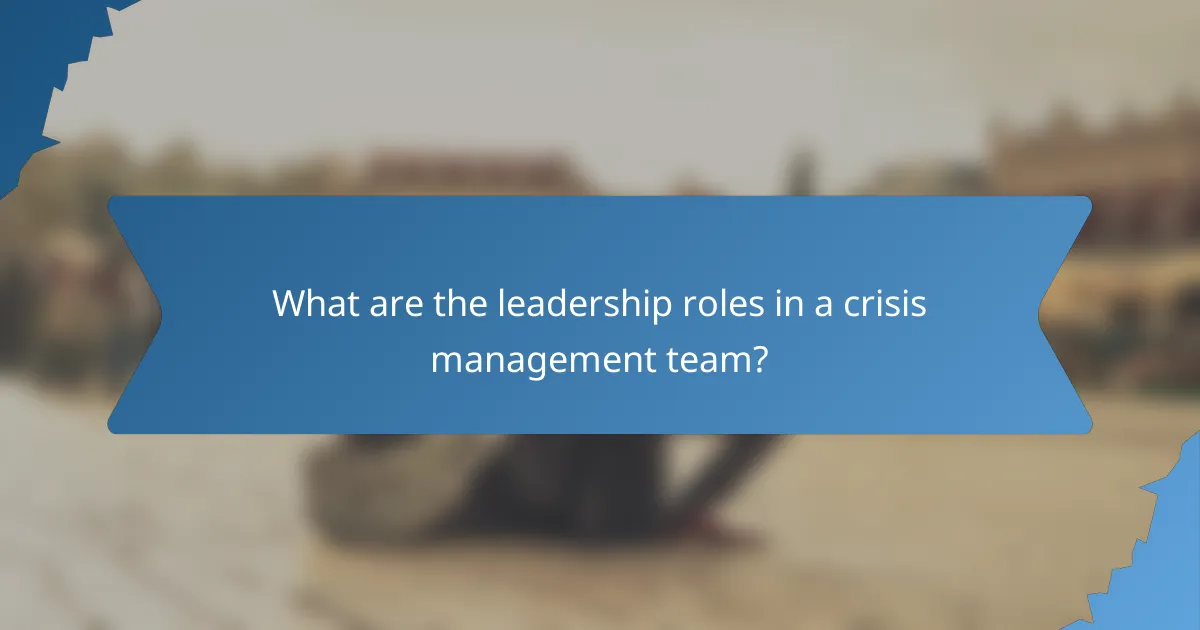
What are the leadership roles in a crisis management team?
The leadership roles in a crisis management team are essential for effective response and recovery during emergencies. Each role has distinct responsibilities that contribute to the overall success of the team’s efforts in managing crises.
Crisis manager
The crisis manager is the primary leader responsible for overseeing the entire crisis response. This individual coordinates the team’s activities, makes critical decisions, and ensures that all actions align with the organization’s objectives and policies.
Key considerations for a crisis manager include maintaining situational awareness, assessing risks, and adapting strategies as new information arises. They should also establish clear communication channels within the team and with external stakeholders.
Communication lead
The communication lead is tasked with managing all internal and external communications during a crisis. This role is crucial for ensuring that accurate information is disseminated quickly to prevent misinformation and maintain public trust.
Effective communication strategies may involve crafting press releases, managing social media updates, and coordinating with media outlets. The communication lead should be prepared to respond to inquiries and provide timely updates to stakeholders, including employees, customers, and the public.
Operations coordinator
The operations coordinator focuses on the logistical aspects of crisis management, ensuring that resources are allocated efficiently and that operational plans are executed effectively. This role involves coordinating with various departments to implement the crisis response plan.
Key tasks for the operations coordinator include managing personnel deployment, overseeing resource distribution, and monitoring the effectiveness of operational strategies. They should also be prepared to adjust plans based on evolving circumstances and feedback from the crisis manager.
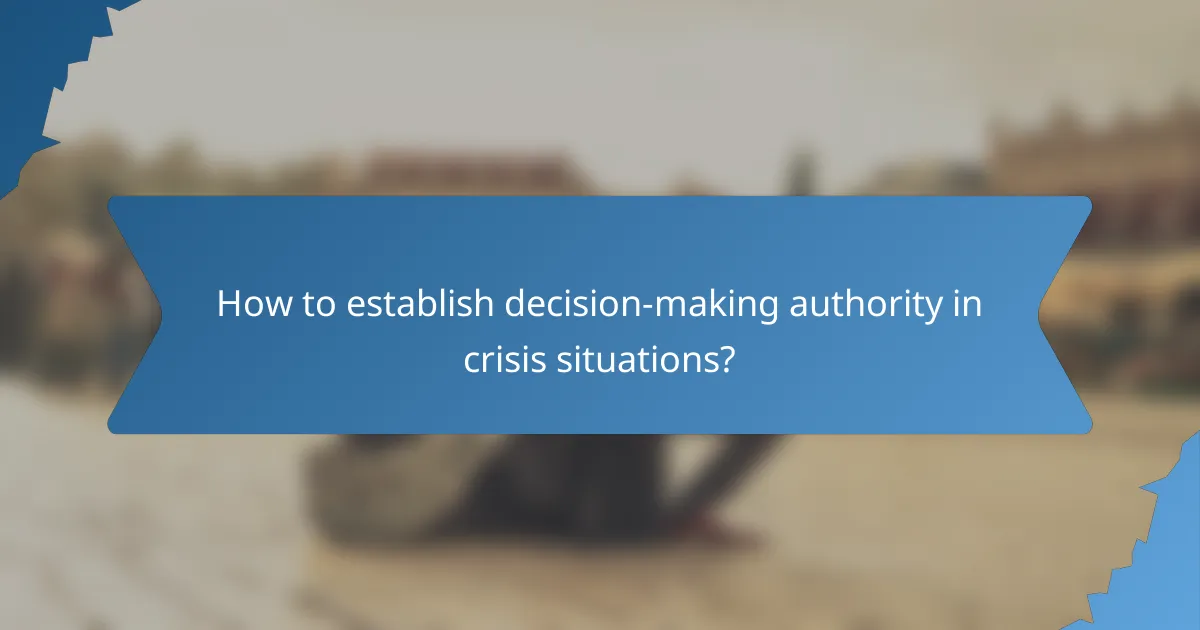
How to establish decision-making authority in crisis situations?
Establishing decision-making authority in crisis situations is crucial for effective response and recovery. Clear roles and responsibilities help streamline actions and minimize confusion during high-pressure scenarios.
Authority delegation
Authority delegation involves assigning specific decision-making powers to team members based on their expertise and role within the crisis management team. This ensures that decisions can be made quickly without unnecessary delays. For example, a communications officer may be empowered to release public statements, while a logistics manager handles resource allocation.
It is essential to communicate these delegated authorities clearly to all team members. Regular training and simulations can help reinforce these roles, ensuring everyone understands their responsibilities when a crisis occurs.
Decision-making frameworks
Decision-making frameworks provide structured approaches to evaluate options and make informed choices during a crisis. Common frameworks include the OODA loop (Observe, Orient, Decide, Act) and the DECIDE model (Define, Establish, Consider, Identify, Decide, Evaluate). These frameworks help teams systematically analyze situations and prioritize actions.
Using a decision-making framework can enhance consistency and transparency in the process. Teams should select a framework that aligns with their organizational culture and the nature of potential crises they may face.
Escalation procedures
Escalation procedures outline the steps for raising issues to higher levels of authority when immediate resolution is not possible. These procedures ensure that critical decisions receive the necessary attention and resources. For instance, if a team member encounters a significant obstacle, they should know the protocol for escalating the issue to a senior leader.
Establishing clear escalation paths can prevent bottlenecks and ensure timely responses. Regular reviews and updates of these procedures are vital to adapt to changing circumstances and improve overall crisis management effectiveness.

What are the best practices for crisis communication in Canada?
Effective crisis communication in Canada hinges on clarity, speed, and engagement with all relevant parties. Organizations should prioritize transparent messaging, stakeholder engagement, and a robust media relations strategy to navigate crises successfully.
Transparent messaging
Transparent messaging is crucial during a crisis, as it builds trust and credibility. Organizations should communicate clearly about the situation, the steps being taken, and any potential impacts on stakeholders. Regular updates, even if there is no new information, help maintain transparency.
Use straightforward language and avoid jargon to ensure that all audiences understand the message. Consider employing multiple channels, such as social media, email, and press releases, to reach diverse groups effectively.
Stakeholder engagement
Engaging stakeholders is essential for effective crisis communication. Identify key stakeholders, including employees, customers, suppliers, and the community, and tailor your communication to their specific needs and concerns. This approach fosters a sense of inclusion and support during challenging times.
Establish feedback mechanisms, such as surveys or hotlines, to gauge stakeholder sentiment and address concerns promptly. This responsiveness can mitigate negative perceptions and enhance relationships in the long run.
Media relations strategy
A proactive media relations strategy is vital for managing public perception during a crisis. Designate a spokesperson who is well-informed and trained to handle media inquiries. This individual should be accessible and provide timely updates to ensure consistent messaging.
Develop key messages that convey your organization’s position and planned actions. Prepare for potential questions and scenarios to maintain control over the narrative. Building relationships with journalists before a crisis can also facilitate smoother communication when issues arise.
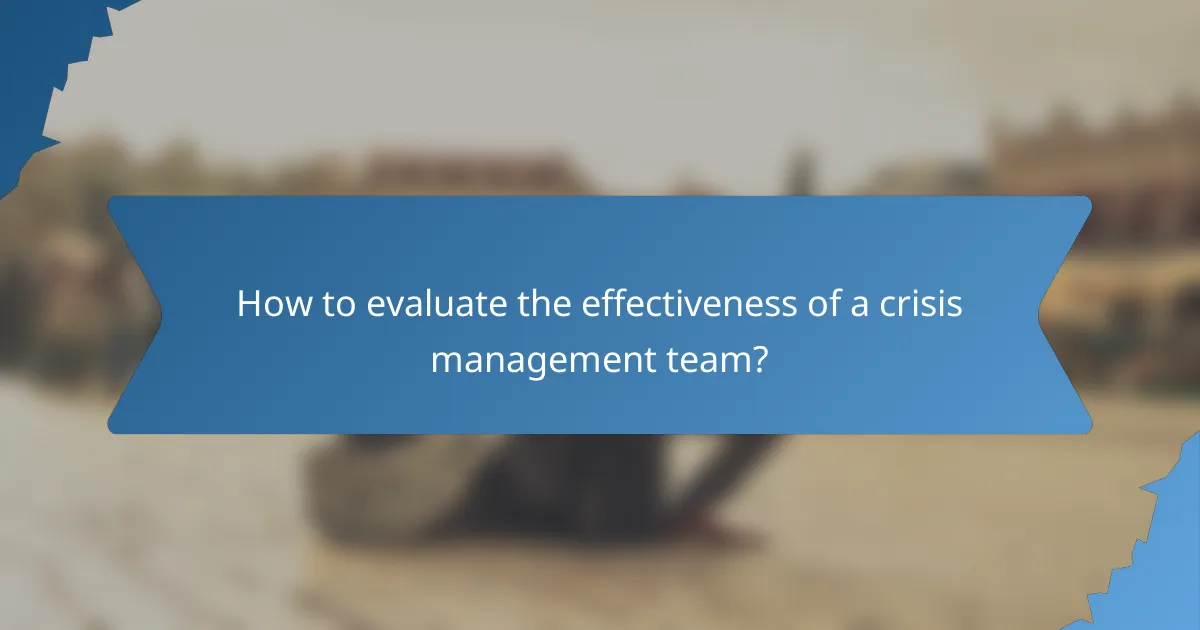
How to evaluate the effectiveness of a crisis management team?
Evaluating the effectiveness of a crisis management team involves assessing how well the team responds to crises, communicates, and implements solutions. Key indicators include performance metrics and post-crisis reviews that provide insights into strengths and areas for improvement.
Performance metrics
Performance metrics are quantifiable measures that help assess a crisis management team’s response during an incident. Common metrics include response time, resolution time, and stakeholder satisfaction. For example, a team may aim for a response time of under 30 minutes and a resolution time within a few hours.
Additionally, tracking the number of crises handled successfully versus those that escalated can provide valuable insights. Regularly reviewing these metrics allows teams to identify patterns and adjust their strategies accordingly.
Post-crisis reviews
Post-crisis reviews are essential for evaluating the overall effectiveness of a crisis management team after an incident has occurred. These reviews typically involve gathering feedback from team members and stakeholders to analyze what worked well and what did not. A structured approach, such as a debriefing session, can facilitate this process.
During these reviews, teams should focus on specific aspects such as communication effectiveness, decision-making processes, and resource allocation. Documenting lessons learned and actionable recommendations helps improve future responses and fosters a culture of continuous improvement.
